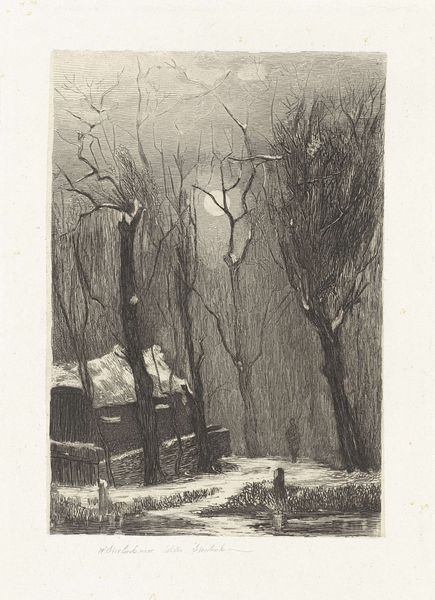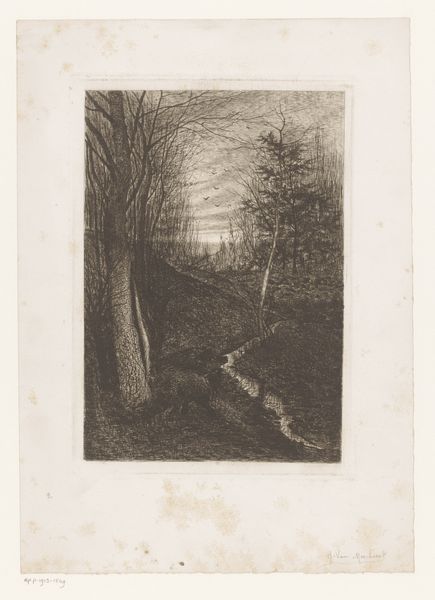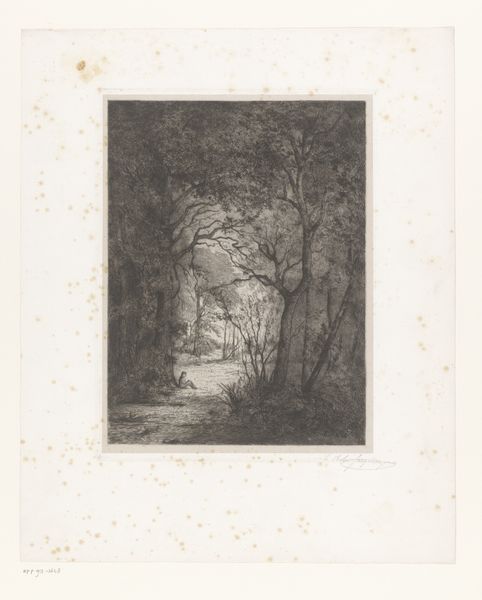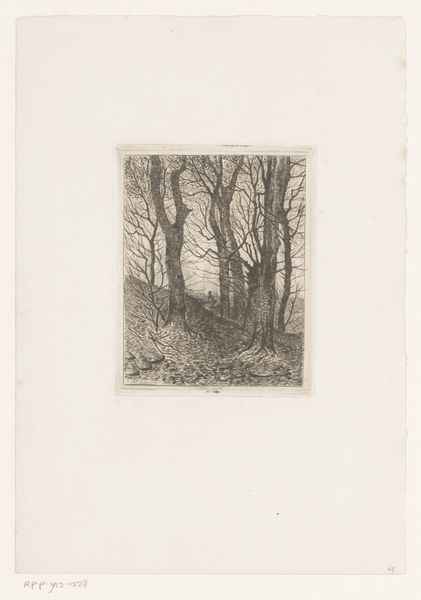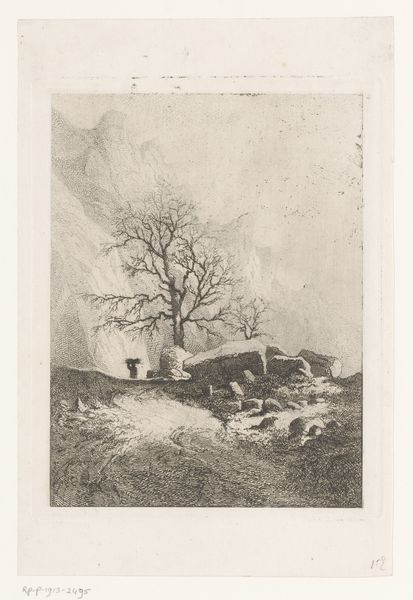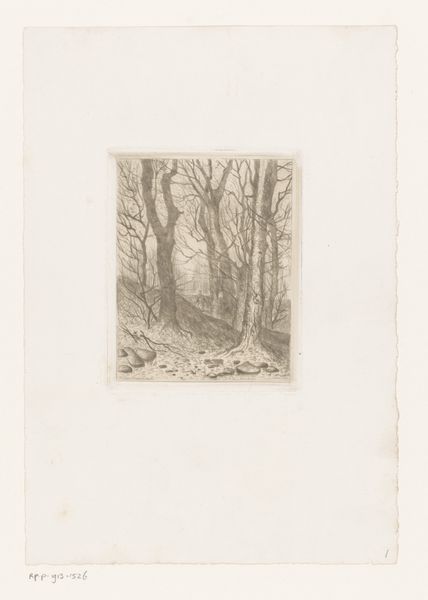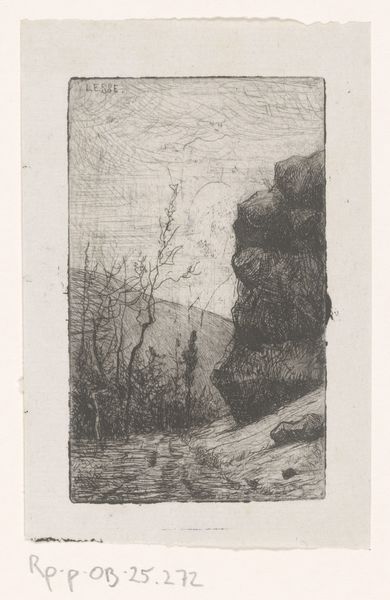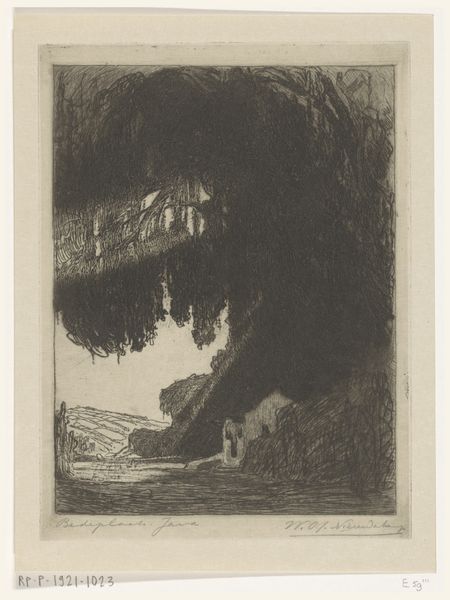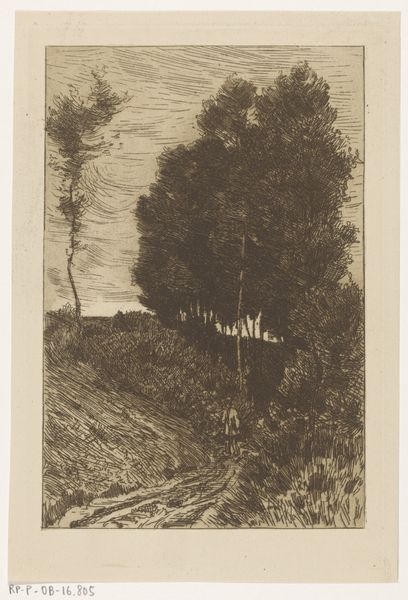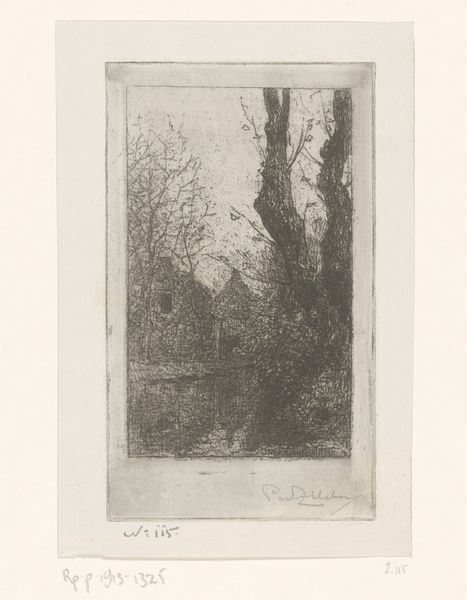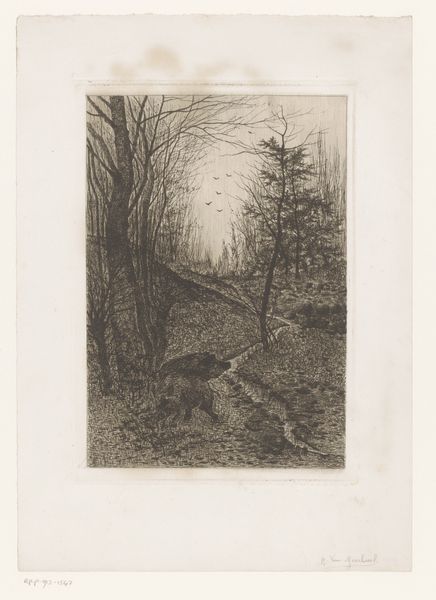
print, etching, engraving
# print
#
etching
#
old engraving style
#
landscape
#
romanticism
#
engraving
#
realism
Dimensions: height 119 mm, width 90 mm
Copyright: Rijks Museum: Open Domain
Curator: Here we have Charles Jacque's "Windmills on a Slope, possibly at Montmartre" from 1846. It’s an etching and engraving on paper. Editor: It feels immediately… melancholy. The heavy sky, that stark tree – it’s a very bleak landscape. But powerfully so. Curator: Jacque was deeply interested in rural life, even while living in the city. What’s compelling here is the texture he creates with etching; he's really pushing the medium to its limit. Editor: Absolutely. Look at the layers! You can practically feel the dirt under your fingernails, the way the artisan pulls away ground matter in the service of productivity and… survival? There's a grit here that's palpable, a physicality absent from more… rarefied arts. Curator: His skill in depicting light is quite stunning. The dark sky versus the slight break in the clouds... he brings a sort of quiet drama. Do you think this relates to the rise of industrialisation during this era? The quiet drama could imply anxiety? Editor: Yes. The windmills represent a transitional technology that relied on the land. You have this very dark sky as if they're working against the oncoming storms and the even darker Industrial Age which relied less and less on such sources. There's a precarity inherent in those structures too. Curator: And it's also so different than his later Barbizon school works, with their light-drenched, more overtly romantic vistas! The shadow of something is definitely falling here, and this one tree is so reminiscent of the lone oak in Caspar David Friedrich’s work. It must carry significance. Editor: Absolutely. Jacque makes these everyday structures speak, in their own way. The means of production here *are* the message. I think this etching allows one to re-think Romanticism less as an obsession of grandiose feeling and instead recognize a humble consideration of human hands. Curator: The artist’s skillful use of shadow provides an interesting way of thinking about human dependency. Beautifully articulated! This image will likely resonate strongly within this museum’s collection. Editor: It's quite deceptive. Such subtle shadows that do so much! Makes me ponder Jacque's world a bit.
Comments
No comments
Be the first to comment and join the conversation on the ultimate creative platform.


